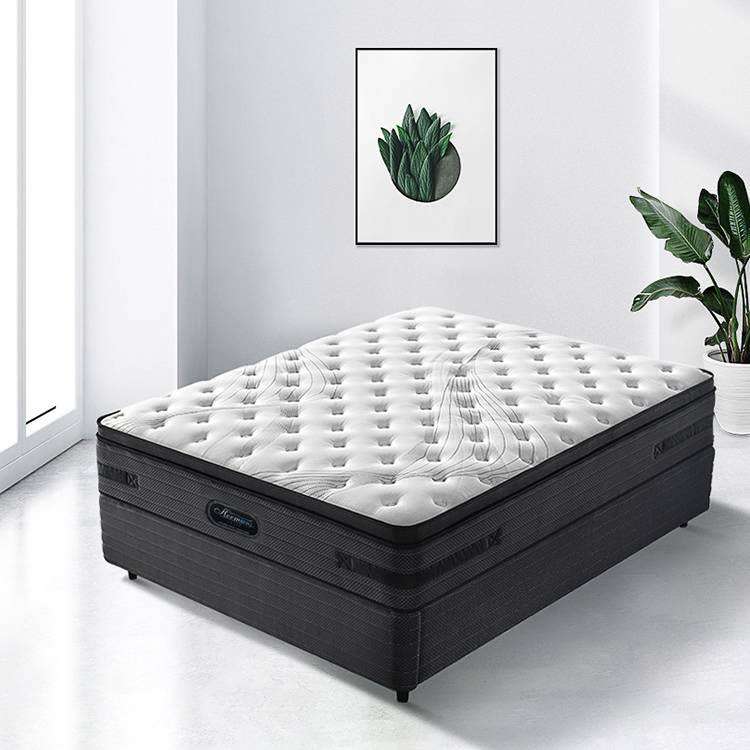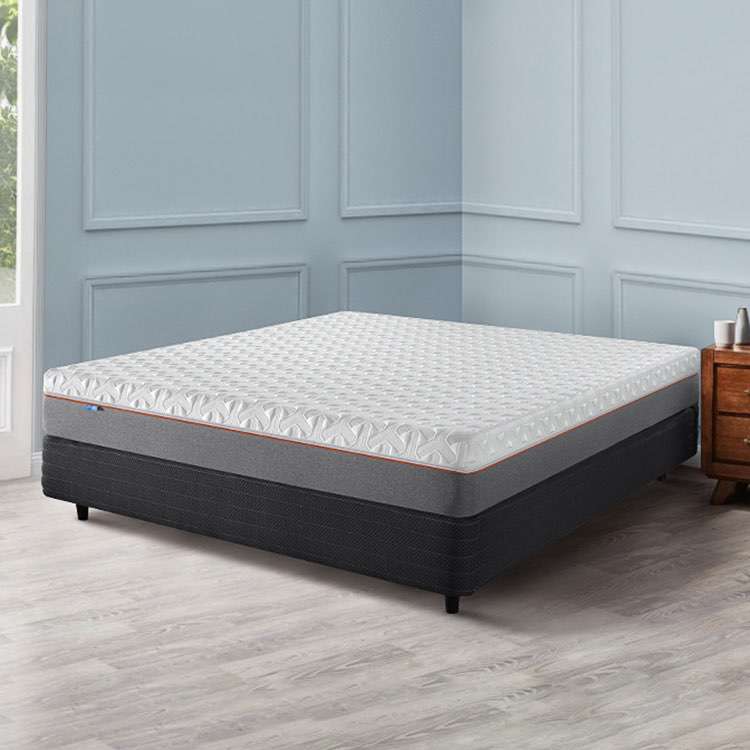How Often Do Mattress Protectors Be Washed?
 FOSHAN LEIZI FURNITURE CO., LTD
FOSHAN LEIZI FURNITURE CO., LTD  April 29,2024
April 29,2024
A restful night's sleep is priceless, and the key to making it happen often lies in the little details of bedding. One such detail that may be overlooked but is crucial is the mattress protector. This humble bedding accessory plays a vital role in protecting your mattress, enhancing your comfort, and creating a cleaner sleeping environment. The cooling mattress protector is a popular mattress protector that ensures sleepers stay comfortably cool throughout the night.
Sleep Guardians: The Purpose of Mattress Protectors
Cooling mattress protector plays a key role in maintaining the integrity of the mattress as well as ensuring the sleeper's quality of sleep.
1. Protect Your Mattress: Prevent Stains and Spills
The core purpose of a mattress protector is that it acts as an elastic shield for the mattress. Consider the countless accidents that can happen in your bed - spilled drinks, unexpected food crumbs, etc. Not having a cooling mattress protector can spell disaster for your mattress, leaving behind unsightly stains and potential damage. A cooling mattress protector is your first line of defense against these everyday mishaps, ensuring your mattress will stay in pristine condition for years to come.
2. Fight against allergens: dust mites, etc.
Beneath the mattress surface is an ecosystem full of dust mites and tiny allergens that can trigger allergies and respiratory problems. The cooling mattress protector creates an impenetrable barrier that prevents dust mites and their allergenic droppings from penetrating your mattress. For people with allergies, asthma or sensitivities, this feature is especially important for creating a healthier sleeping environment.
3. Increased comfort and hygiene: say goodbye to bad smells
Over time, mattresses can accumulate not only dust mites, but also sweat, body oil, and dead skin cells. These factors can create an environment prone to unpleasant odors. The cooling mattress protector helps keep sleeping surfaces fresh and hygienic. They act as a barrier to prevent these fluids and substances from seeping into the mattress. So your bed doesn't smell and your sleeping experience stays comfortable and welcoming.
4. Extend Mattress Life: Choose Smartly
A high-quality mattress protector protects your mattress from wear and tear, extending the life of your mattress. Mattresses naturally accumulate wear and tear from everyday use, but a cooling mattress protector helps minimize this wear, ensuring your mattress remains supportive and comfortable for years to come.
5. Cool Mattress Protector: Enhances Comfort
While standard mattress protectors offer a range of benefits, some special options take comfort to the next level. For example, the cooling mattress protector is designed with advanced materials that help regulate temperature. The cooling mattress protector wicks away excess heat and moisture, ensuring a cooler, more comfortable night's sleep. For those who like to sleep hot or live in warmer climates, a cooling mattress protector can be a game changer.
In conclusion, a cooling mattress protector can protect your mattress from stains, allergens and wear and tear, thus prolonging the life of the mattress and improving the quality of your sleep. Whether you opt for a standard protector or purchase a cooling mattress protector for extra comfort, these humble accessories play a key role in protecting the sanctity of your sleeping environment.
The Art of Maintenance: How to Wash Mattress Protector
Now that we've established the key role mattress protectors play in protecting your mattress and your sleep quality, it's crucial to understand how to properly care for these mattress protectors. Cleaning a cooling mattress protector is a simple process, but proper steps must be followed to ensure its longevity and continued effectiveness.
1. Remove the mattress protector:
Before starting the cleaning process, carefully remove the cooling mattress protector from the bed. This step ensures that you have unrestricted access to the mattress protector and that you can clean it thoroughly without hindrance.
2. Shake or vacuum:
Shake the cooling mattress protector first to remove any loose debris or dust. This initial step helps prevent these particles from ending up in the washing machine.
3. Machine washable:
Most mattress protectors are machine washable, but it's important to check the care instructions provided by the manufacturer to make sure they follow their specific recommendations. When ready to wash mattress protector, place the cooling mattress protector in the washing machine.
4. Low temperature or air dry:
Once you're done wash mattress protector, it's time to dry the protector. Choose a low heat setting in your dryer, or better yet, let it air dry. High temperatures can damage waterproofing layers and elastics, so a gentle drying method is essential.
5. Double-check the care label:
Remember to double check the care label on your mattress protector. Certain cooling mattress protector may have specific instructions that differ from the general guidelines provided here.
6. Cleaning Frequency:
How often you wash your mattress protector depends on your personal habits and needs. As a general guideline, aim to wash every 1 to 2 months. Regular cleaning of cooling mattress protectors will prevent allergen build-up and maintain the effectiveness of the protector.
In conclusion, proper care and maintenance of your mattress protector is essential to ensure it continues to play its important role in protecting your mattress and the quality of your sleep. By following these steps and guidelines, you can extend the life of your protector and enjoy a cleaner, more hygienic sleep environment. These treatments work whether you have a standard cover or a premium cooling mattress protector, ensuring you get the most out of this must-have bedding accessory.
How Often Should You Wash Your Mattress Protector?
Keeping your mattress protector wash is not only critical to the quality of your sleep, but also to extending its lifespan and effectiveness. How often you wash mattress protector depends on a variety of factors, including your personal habits, lifestyle, and personal needs.
1. General advice:
As a general guideline, it is recommended to clean your mattress protector approximately every 1 to 2 months. This frequency keeps your cooling mattress protector safe from accumulated dust, sweat, body oils and potential allergens. Regular cleaning can prevent these substances from compromising its function and the overall hygiene of the sleeping environment.
2. Allergies and sensitivities:
If you or any family member has allergies, asthma or other sensitivities, you may need to clean more often. In this case, consider wash mattress protector every 2 to 4 weeks to keep allergen levels in check.
3. Night sweats:
People who experience frequent night sweats may also benefit from more frequent cleansing. Sweat can seep into the cooling mattress protector, create an unpleasant smell, and potentially harbor bacteria. If you experience frequent night sweats, consider washing your cooling mattress protector every 2 to 4 weeks to maintain a fresh and comfortable sleeping environment.
4. Seasonal considerations:
In some cases, you may find that cleaning frequency changes seasonally. For example, you might choose to clean your cooling mattress protector more frequently during the hotter, humid months, when sweat and allergens are more likely to build up.
5. Personal comfort and hygiene:
Ultimately, the frequency of washing mattress protector should be determined by your personal comfort and hygiene preferences. A clean and well-maintained cover will not only improve the quality of your sleep, it will also help keep your bed looking fresh overall.
In summary, the ideal frequency for wash mattress protector is a balance between hygiene, preventing allergen build-up, and accommodating your personal habits and needs. Regular cleaning of your cooling mattress protector (at least every 1 to 2 months) is a good place to start for most people. However, don't hesitate to adjust this frequency based on allergies, night sweats, etc. By paying attention to these considerations and following proper care practices, you can ensure your mattress protector continues to perform its important role in protecting your mattress and the quality of your sleep.
When Should You Replace Your Mattress Protector?
While mattress protectors are designed to prolong the life of your mattress and provide continued protection, cooling mattress protectors are not indestructible. Over time, wear and tear can take its toll, and the protector may no longer be as effective as it once was. Knowing when to replace your mattress protector is critical to ensuring your mattress continues to receive the best possible care.
1. Visible damage:
One of the clearest signs that it's time to replace a mattress protector is obvious damage. Inspect your cooling mattress protector regularly for tears, holes, or severe wear.
2. Reduced water resistance or stain resistance:
The mattress protector is engineered to be water and stain resistant. If you find that your protector is no longer effectively repelling liquids or allowing stains to seep in, it is a sign that your cooling mattress protector protection has weakened. This could cause potential damage to your mattress.
3. Elastic or strap:
Many mattress protectors come with elastic or straps to secure them to the mattress. If they no longer hold the cooling mattress protector securely in place, it may cause the mattress protector to move and bunch up during sleep. Not only does this affect its effectiveness, but it can also be uncomfortable.
4. Age and Usage:
Like any bedding accessory, a mattress protector has a limited lifespan. Protectors can vary in quality and durability, but in general, consider replacing your mattress protector every 2 to 5 years. This time frame depends on factors such as the quality of the mattress protector, how often it is used, and how well it is maintained.
In conclusion, knowing when to replace your mattress protector is critical to ensuring your mattress continues to receive the protection it needs. Regular inspections, noting wear and tear, and factors such as age and usage should guide your decision. Replacing your mattress protector when it shows signs of damage or diminishing effectiveness will help protect your mattress and maintain a clean and comfortable sleeping environment for years to come.
How Often Should You Replace Other Bedding?
While we've discussed the importance of replacing your mattress protector, it's also important to consider how often your other bedding needs to be replaced. Your pillows, sheets, duvet covers and other bedding play a vital role in the quality of your sleep and overall comfort. Knowing when to replace these items will ensure your sleeping environment remains clean, hygienic, and conducive to a restful night's sleep.
1. Pillows:
A pillow is the foundation of your sleeping comfort, providing support for your head and neck. As a general guideline, replace your pillow every 1 to 2 years.
2. Sheets:
Sheets come into direct contact with your body every night, absorbing sweat and skin cells. High-quality sheets last longer, but on average, consider changing your sheets every 2 to 3 years.
3. Duvet cover:
A duvet cover acts as a protective barrier for your duvet or comforter. They are usually easier to clean than the duvet itself. Replacing your duvet cover every 2 to 3 years is good practice for hygiene and good looks.
4. Mattress:
Although a mattress is not bedding, it is an important part of the sleeping environment. A high-quality mattress can last a decade or more.
In conclusion, the frequency of changing bedding varies based on factors such as material quality, personal preference and maintenance. Following these general guidelines for changing pillows, sheets, duvet covers and other bedding will ensure your sleeping environment remains comfortable, hygienic and conducive to a good night's rest. Regular evaluation and replacement as necessary can help improve your overall sleep quality and well-being.
Conclusion
In pursuit of a truly restful night's sleep, we've explored the basics of maintaining and replacing your bedding, including mattress protectors, pillows, sheets, duvet covers and more. Each of these components plays a vital role in shaping the quality of your sleep and the overall comfort of your sleeping environment.
Regularly inspecting and, if necessary, replacing items like cooling mattress protectors isn't just a matter of hygiene; it's an investment in your well-being. By following these guidelines, you can ensure your sleeping space remains a haven of cleanliness, comfort and rejuvenation.
In conclusion, the art of maintaining and replacing your bedding is the cornerstone of ensuring your sleep is restful, rejuvenating and beneficial to your overall health. When you invest in these vital components of your sleep sanctuary, you're investing in the renewal of your body and mind every night.
FAQ
1. How often should I wash mattress protector?
In general, it is recommended to wash mattress protector every 1 to 2 months to maintain hygiene and prevent allergen build-up. If you suffer from allergies or night sweats, consider washing your cooling mattress protector every 2 to 4 weeks for best results.
2. When should I replace my mattress protector?
Replace your cooling mattress protector when you notice visible damage (such as tears or holes), reduced water or stain resistance, or the elastic or straps no longer properly secure the mattress protector. On average, consider replacing every 2 to 5 years.
3. How often should I change my pillow?
Pillows should be replaced every 1 to 2 years. Signs that it needs to be replaced include flattened or bumpy pillows, persistent neck pain, or allergy symptoms.
4. When is the right time to change bed sheets and duvet covers?
Sheets and duvet covers are changed every 2 to 3 years on average. Look for signs of wear, such as fabric thinning, frayed edges, or loss of softness and comfort.
5. What about other bedding such as blankets and comforters?
Blankets and comforters typically last 3 to 5 years if cared for properly. Regular cleaning and maintenance will help extend its life.











